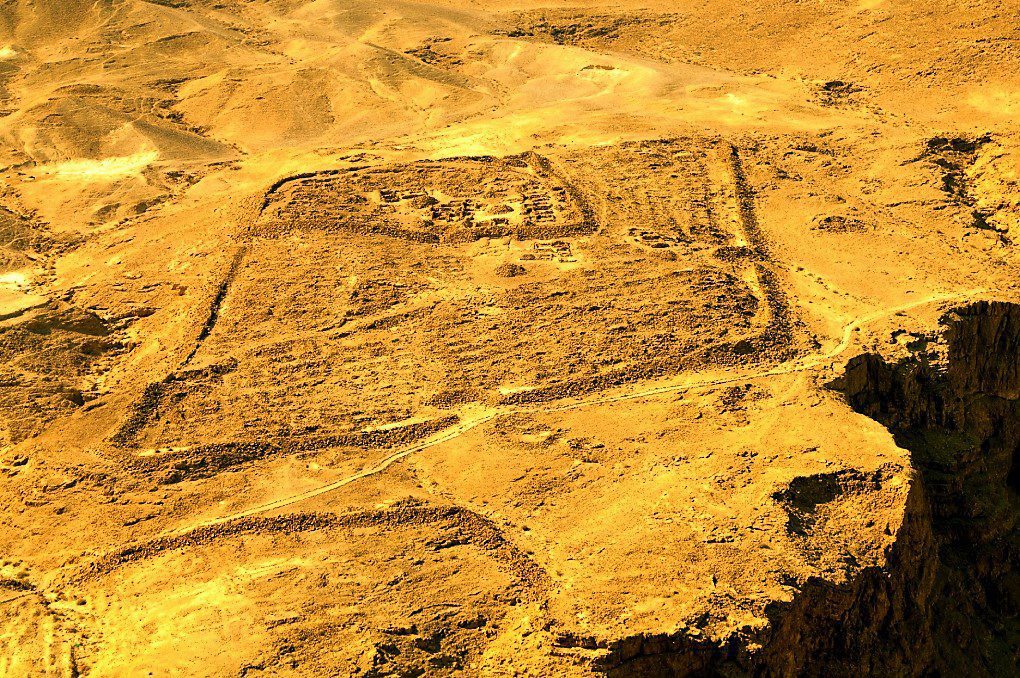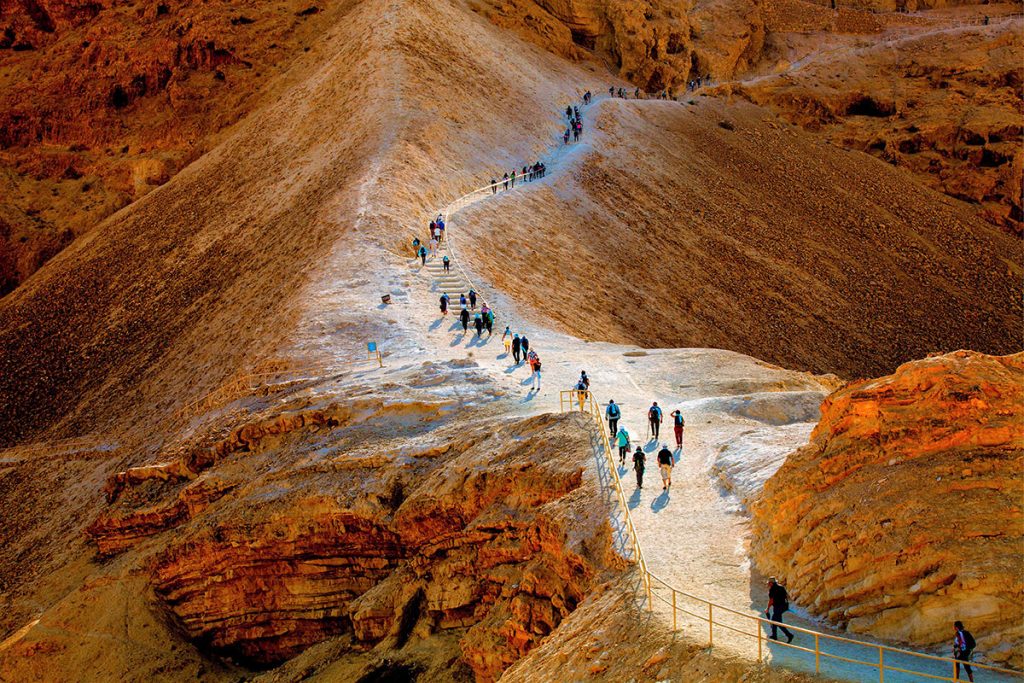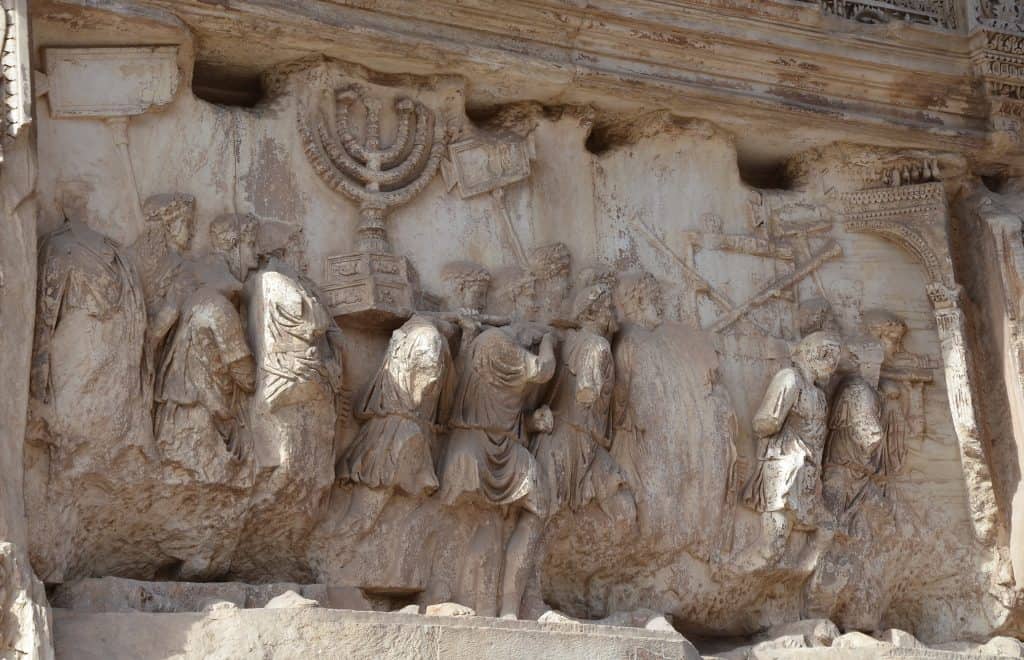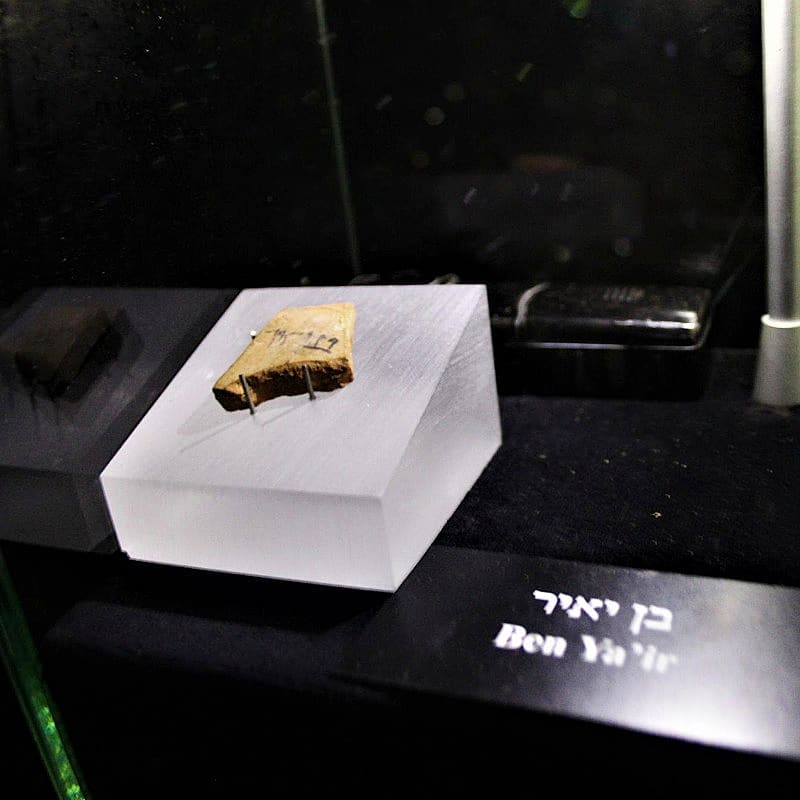Masada National Park is one of Israel’s most popular tourist attractions. Located on the eastern edge of the Judaean Desert overlooking the Dead Sea; the park houses the known site of Masada! An ancient fortification built by Herod the Great! You’ll find Masada National Park on top of an isolated rock plateau, akin to a mesa. In fact, Herod the Great built two palaces for himself on the mountain and fortified Masada between 37 and 31 BCE. Then according to Josephus; the siege of Masada by Roman troops from 73 to 74 CE; at the end of the First Jewish–Roman War; ended in the mass suicide of the 960 Sicarii rebels who were hiding there.

The History of Masada National Park
According to Josephus, between 37 and 31 BCE, Herod the Great built a large fortress on the plateau as a refuge for himself in the event of a revolt and erected two palaces there. While touring Masada National Park, you will see this amazing engineering feat. Herod built Roman baths as a part of the Northern complex, where he had the best view of the Dead Sea. The complex includes 29 storerooms where Herod kept all those goods and exquisite food from afar. For example, Garum sauce from Spain or delicious wine from Italy. But the real glorious episode of Masada National Park starts with the Second Jewish Revolt.

So the story goes that in 66 CE, a group of Jewish rebels overcame the Roman garrison of Masada with the aid of a ruse. After the destruction of the Second Temple in 70 CE, additional members of the rebels fled Jerusalem and settled on the mountaintop after slaughtering the Roman garrison. According to Josephus, the rebels were an extremist Jewish splinter group antagonistic to a larger grouping of Jews referred to as the Zealots, who carried the main burden of the rebellion. Josephus said that the Sicarii raided nearby Jewish villages, including Ein Gedi, where they massacred 700 women and children.
The End at Masada National Park
By 73 CE, Masada was the last Jewish stronghold. So the Roman governor of Iudaea, Lucius Flavius Silva, headed the Roman legion X Fretensis and laid siege to Masada. Then the Roman legion surrounded Masada; built a circumvallation wall and a siege ramp against the western face of the plateau. According to Josephus, when Roman troops entered the fortress, they discovered that its defendants had set all the buildings but the food storerooms ablaze and committed mass suicide or killed each other, 960 men, women, and children in total.

Credit: Carole Raddato from FRANKFURT, Germany, CC BY-SA 2.0, via Wikimedia Commons
A Byzantine Monastery of Marda
The last episode in Masada National Park was during the Byzantine period, when a small church was established at the site. The church was part of a monastic settlement identified with the monastery of Marda known from hagiographical literature. The Aramaic common noun marda, “fortress”, corresponds in meaning to the Greek name of another desert monastery of the time, Kastellion, and is used to describe that site in the vita (biography) of St Sabbas, but it is only used as a proper name for the monastery at Masada, as can be seen from the vita of St Euthymius.

On my private tours of Masada National Park. I like to take the cablecar and start with the Northern Palace complex. It’s the pearl of every visit to Masada! So if you visit the site, don’t skip that for sure. Then I show my guests the Roman bathhouse, which is very well preserved, and next to it is the Jewish ritual bath the rebels built. If time permits, we can visit some of the fortifications and the water system, which is an engineering feat by itself. I mean, how did Herod was able to bring so much water in the middle of the desert? Well, you will need to go on one of my guided tours of Masada National Park.

